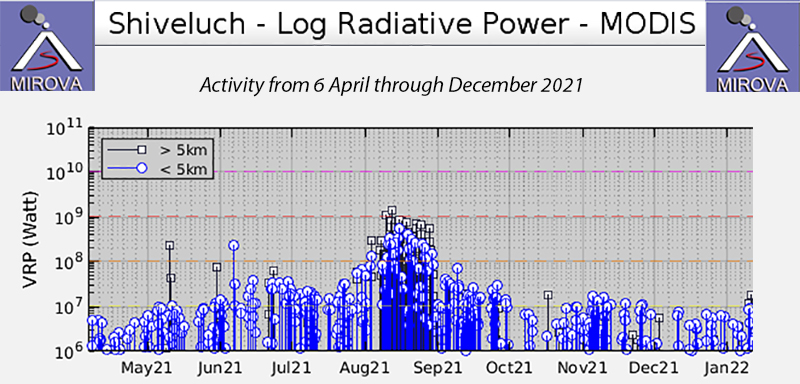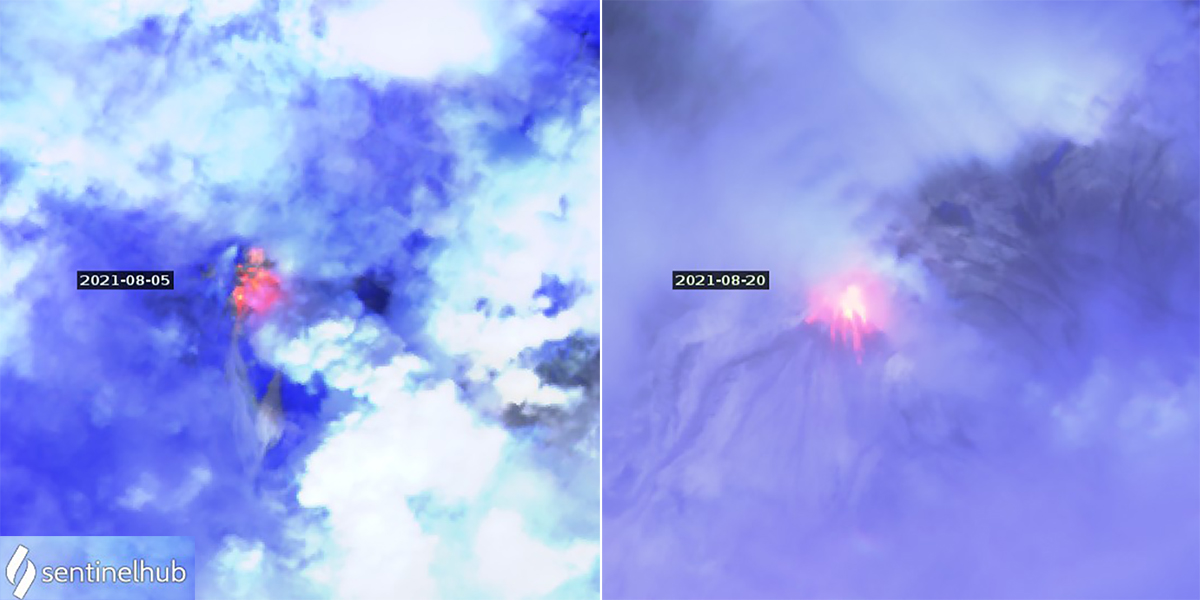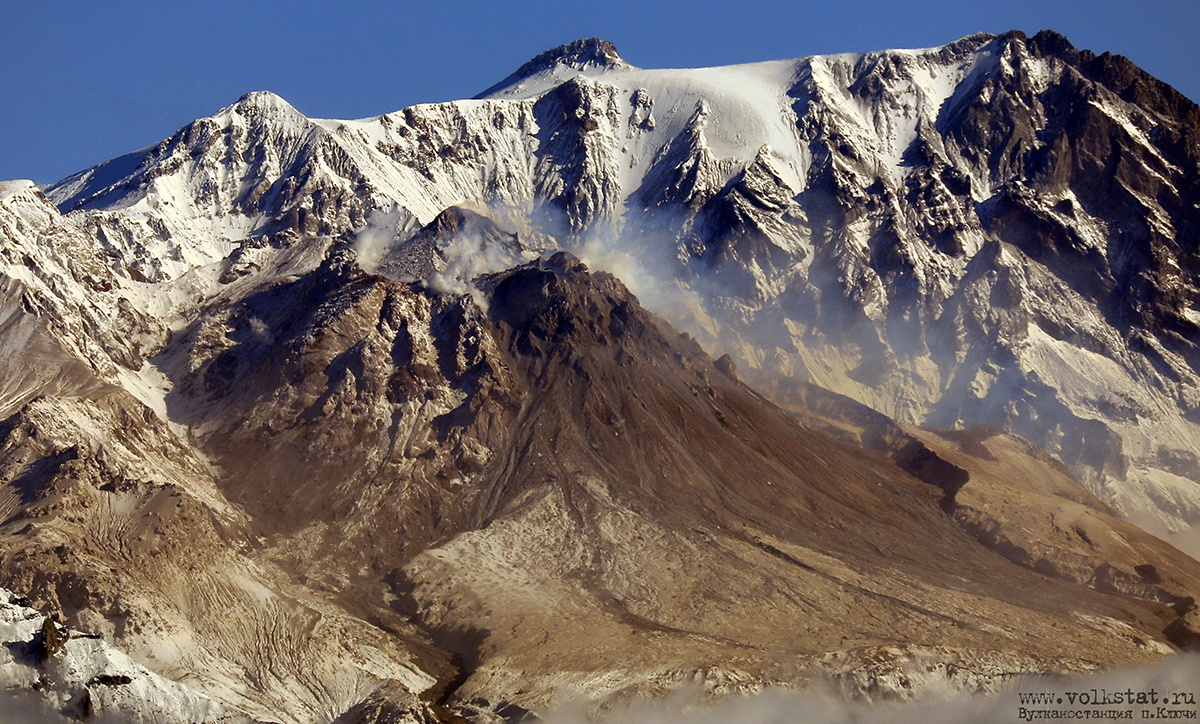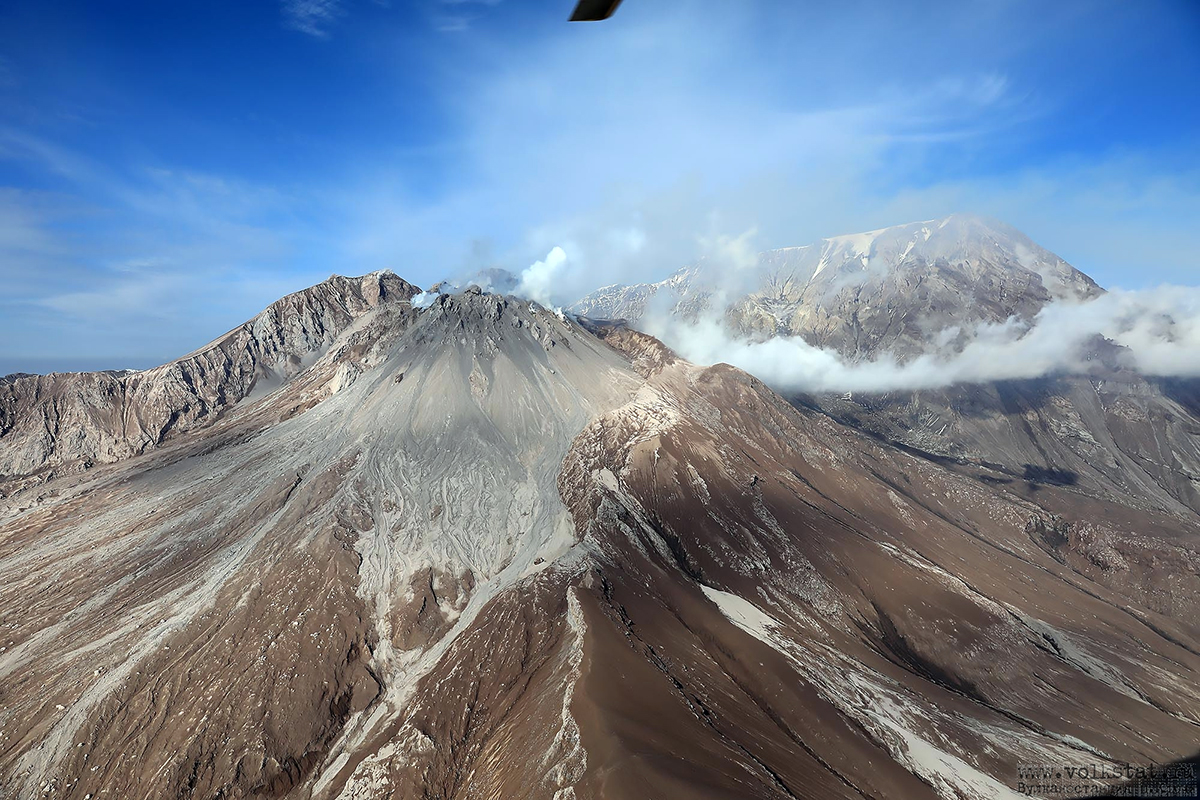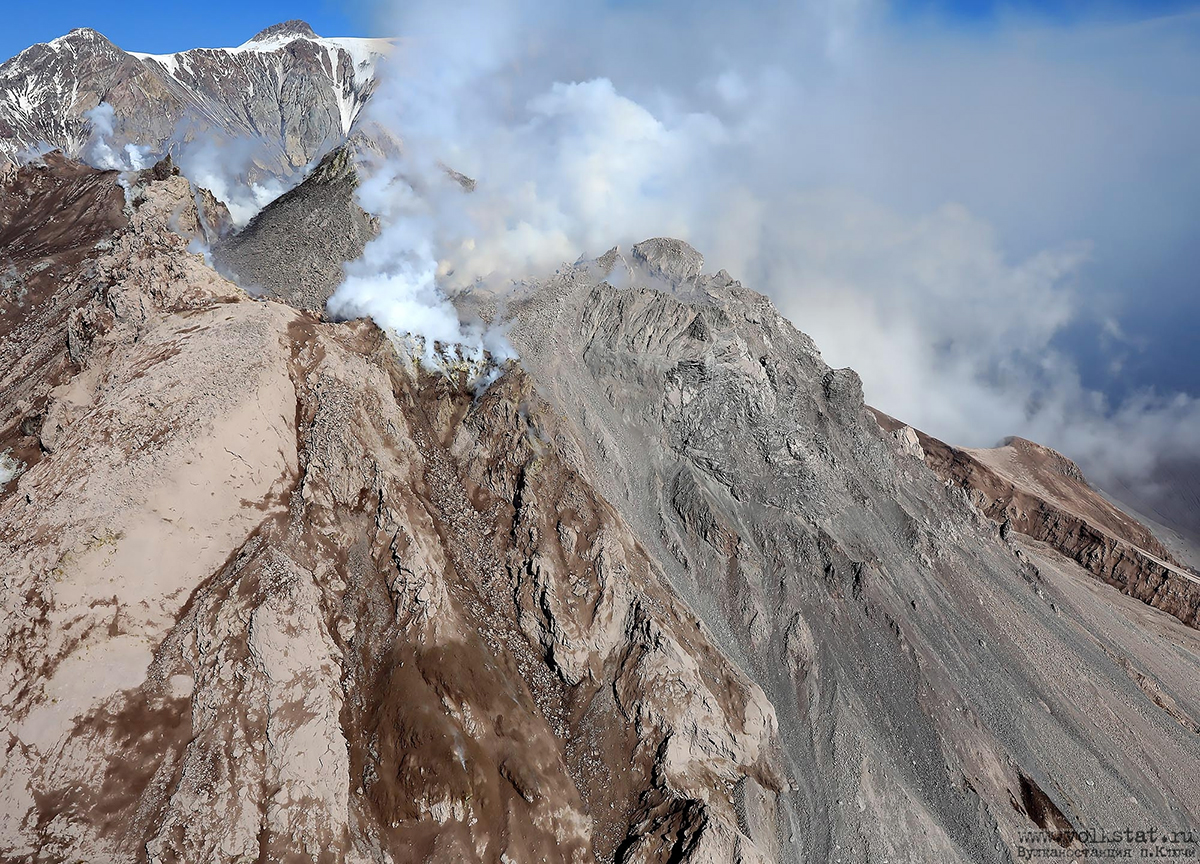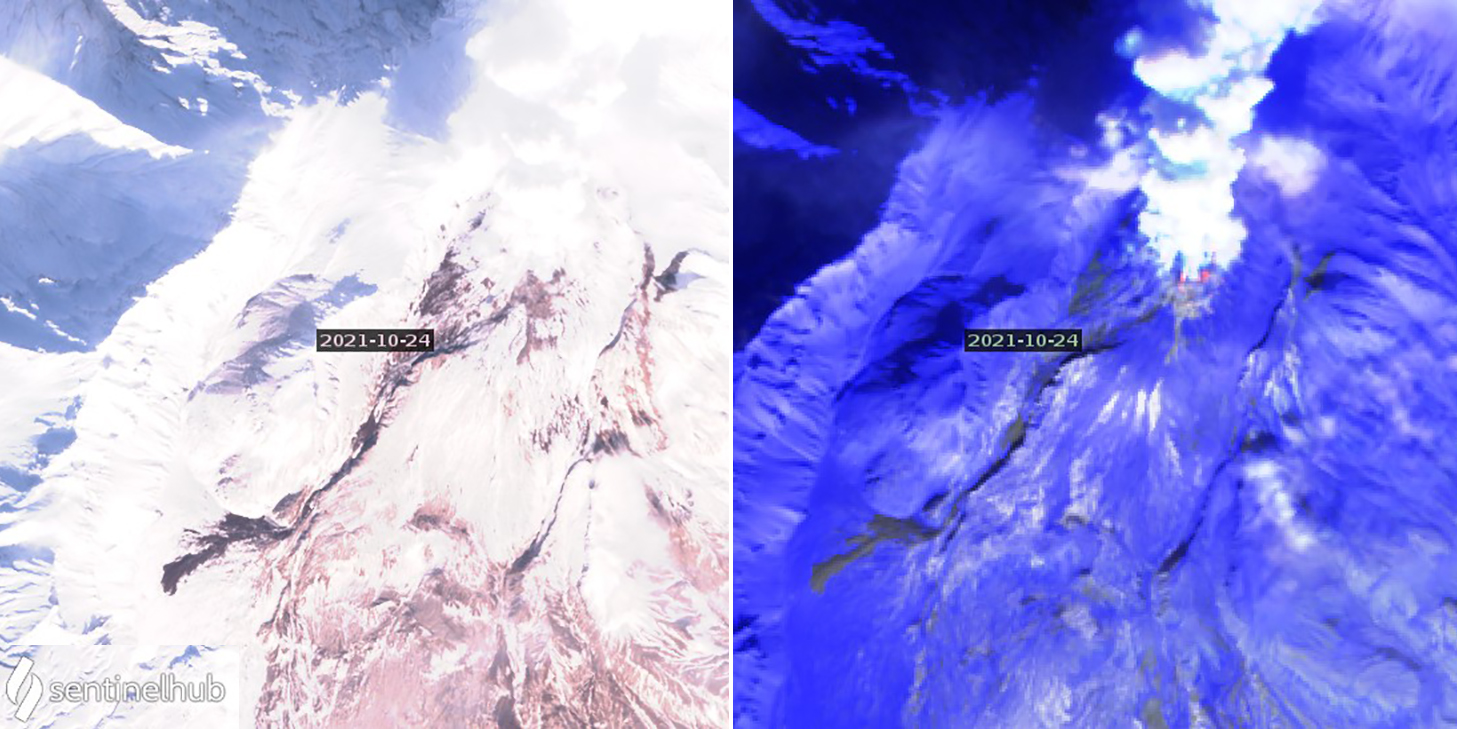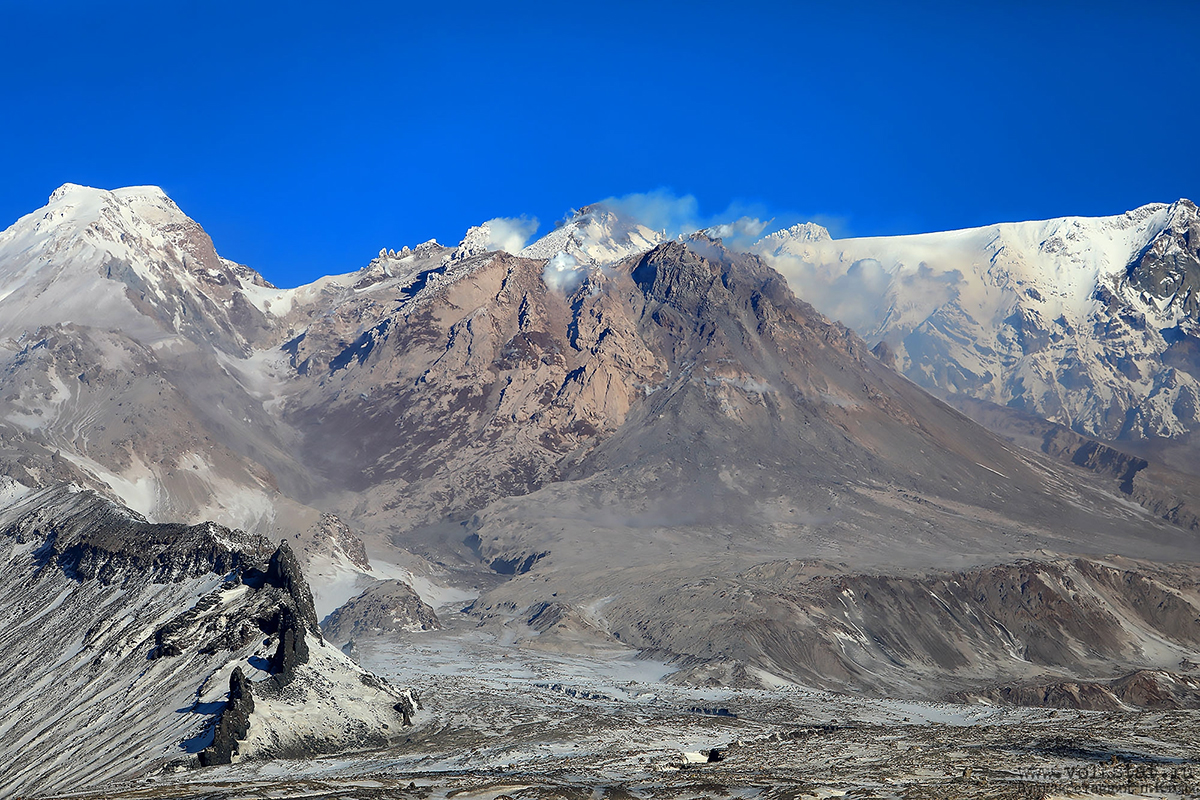Report on Sheveluch (Russia) — February 2022
Bulletin of the Global Volcanism Network, vol. 47, no. 2 (February 2022)
Managing Editor: Edward Venzke.
Edited by A. Elizabeth Crafford.
Sheveluch (Russia) Explosions destroy most of the whaleback dome; dome growth continues, July-December 2021
Please cite this report as:
Global Volcanism Program, 2022. Report on Sheveluch (Russia) (Crafford, A.E., and Venzke, E., eds.). Bulletin of the Global Volcanism Network, 47:2. Smithsonian Institution. https://doi.org/10.5479/si.GVP.BGVN202202-300270
Sheveluch
Russia
56.653°N, 161.36°E; summit elev. 3283 m
All times are local (unless otherwise noted)
Russia’s Sheveluch (Shiveluch) volcano in the northeastern region of the Kamchatka peninsula, has produced numerous major eruptions documented in both reported observations dating back several hundred years and also with tephrochronology dating back 10,000 years. A major south-flank collapse during a 1964 Plinian explosion produced a scarp within which a “Young Sheveluch” dome began to form in 1980. Repeated episodes of dome formation and destruction since then have produced major and minor ash plumes, pyroclastic, and block-and-ash flows, and two “whaleback domes” of spine-like extrusions in 1993 and 2020. The whaleback domes were subsequently destroyed with further dome growth and the ongoing explosive activity. This report summarizes activity from July-December 2021 with information provided by the Kamchatka Volcanic Eruptions Response Team (KVERT), the Kamchatka Volcano Station (part of the Kamchatka Branch of the Geophysical Survey, Russian Academy of Science (KB GS RAS), the Tokyo Volcanic Ash Advisory Center (VAAC), and satellite information.
The growth of the lava dome inside the 1964 flank collapse scarp continued throughout July-December 2021. Strong fumarolic activity with gas and steam rising from multiple vents around the dome was recorded in either satellite images or was visible whenever the volcano was not obscured by weather. Incandescence at the dome persisted and incandescent block avalanches were reported on most days. A significant increase in thermal and explosive activity during August coincided with the destruction of part of the “Dolphin” whaleback dome that first appeared in September 2020 (BGVN 45:11, figure 55). Ash emissions were recorded daily for much of August. Activity decreased from September through mid-December, with low levels of thermal activity persisting. A new episode of explosions with ash emissions was recorded in late December. The spike in thermal activity during August is clearly seen in the MIROVA Log Radiative Power graph of activity from 6 April through December 2021 (figure 74).
Lava dome growth continued during July 2021, with observations of strong fumarolic activity and incandescent blocks on the dome. A thermal anomaly was present almost every day, according to KVERT, and multiple anomalies were observed in Sentinel-2 satellite imagery during the month (figure 75). MODVOLC thermal alerts were recorded on 7, 8, 22, 25, 28, and 30 July. During 6-7 July, KVERT satellite data indicated that resuspended ash extended about 90 km E from the volcano at 3.4 km altitude. The Tokyo VAAC reported an ash emission on 17 July that rose to 3.7 km altitude and drifted SE. Activity increased on 26 July with small explosions and collapses of numerous lava dome blocks observed that day and the next. A gas and steam plume containing ash drifted 45 km E. The Tokyo VAAC reported that the ash emission on 26 July rose to 4.3 km altitude and drifted SE. They noted another explosion on 27 July that was estimated at 6.1 km altitude from seismic data. On 28 July two possible ash plumes were observed drifting E and SE at 3.4 km altitude.
Thermal and explosive activity increased significantly during August 2021. The Tokyo VAAC reported a series of ash emissions during 2-4 August that rose to 3.7-3.9 km altitude and drifted S and SE. Multiple MODVOLC thermal alerts were issued on several days including 3, 10, 11, 13, 15-22, 24-25, and 28-29 August(figure 76). In addition to the strong fumarolic activity and incandescence observed daily on the dome, avalanches of incandescent blocks began on 5 August and lasted throughout the month (figure 77). KVERT reported ash emissions extending about 90 km SW from the volcano on 7 August; the Tokyo VAAC reported these emissions at 4.3 km altitude. KVERT noted an increase in dome thermal anomaly brightness from 8 August through the rest of the month. Beginning on 9 August, the Tokyo VAAC issued multiple daily ash alerts through 30 August. Emissions rose to altitudes from 3.7 to 5.5 km that initially drifted SW, switched to SE then back to SW at the end of the month. KVERT reported plumes drifting 50-170 km SW during 10-13 August and reaching as far as 350 km SE during 13-24 August. Steam and gas emissions containing ash were also recorded by Kamchatka Volcano Station researchers during 10-13 August. They also reported small explosions on 10 and 11 August that contributed to the destruction of the ‘Dolphin’ whaleback dome, and noted multiple small collapses and incandescent block avalanches on the S and SE slopes of the dome each night in late August.
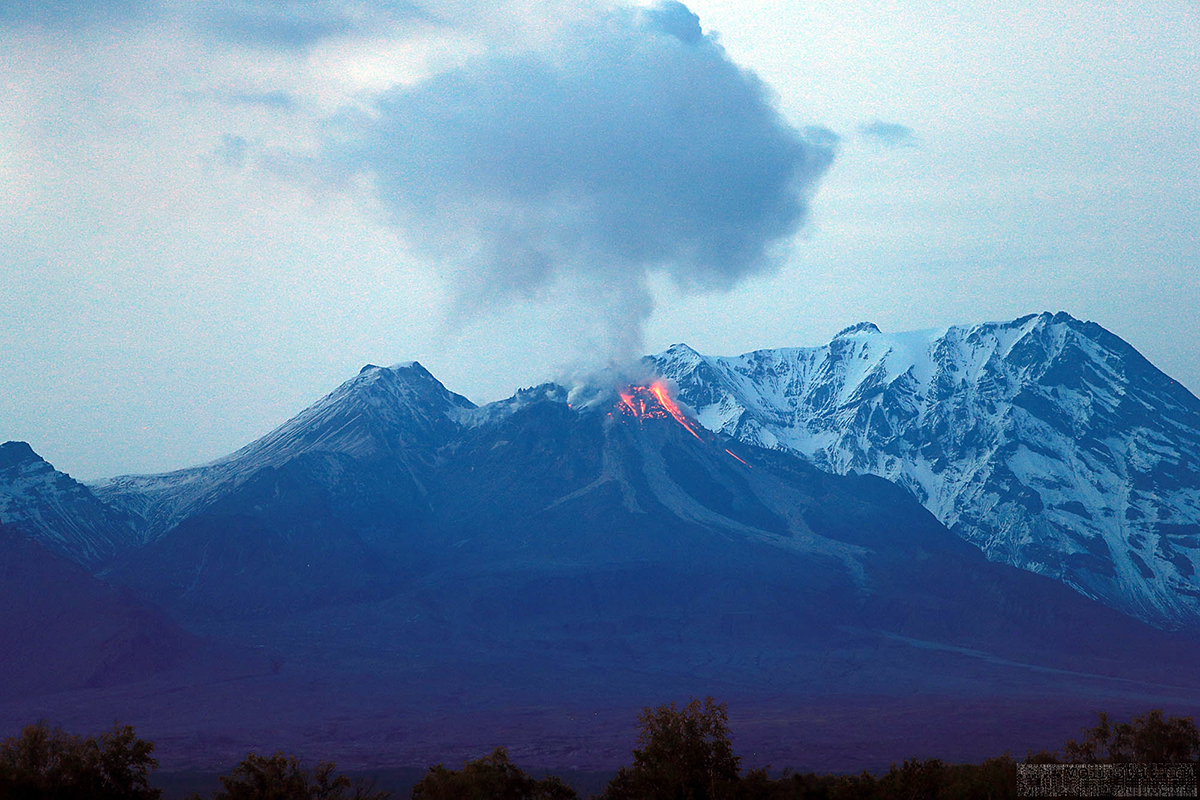 |
Figure 77. Blocks of incandescent ejecta roll down the flanks of the dome at Sheveluch on 10 August 2021. Photo by Alexey Demyanchuk, courtesy of the Kamchatka Volcano Station. |
Both thermal and explosive activity decreased significantly during September 2021, although the lava dome continued to grow. Incandescent blocks were visible on the flank of the dome, and a thermal anomaly was present at the dome throughout the month according to KVERT, decreasing slightly in intensity for the second half of the month. MODVOLC thermal alerts decreased in frequency and intensity compared with August; single or double alerts were recorded on 4, 5, 7, 9, 14-15, and 17-18 September, but no more were reported for the remainder of 2021. Researchers at the Kamchatka Volcano Station reported the noticeable drop in overall activity including far fewer incandescent block avalanches than during August, but continued to report incandescence at the SE edge of the crater at night. Visitors to the volcano experienced ashfall on 8 September; inclement weather prevented views of the summit. The next morning on 9 September a clear view of the volcano revealed a small pyroclastic flow on the flank in the direction of the Baydarnaya River (figure 78). Infrared imagery observed the previous nights had shown an increase in incandescence and small block avalanches on the SE flank. Resuspended ash was reported drifting SE at 3.4 km altitude on 10 September. Dense steam and gas emissions drifted SE from multiple spots around the dome on 13 September (figure 79).
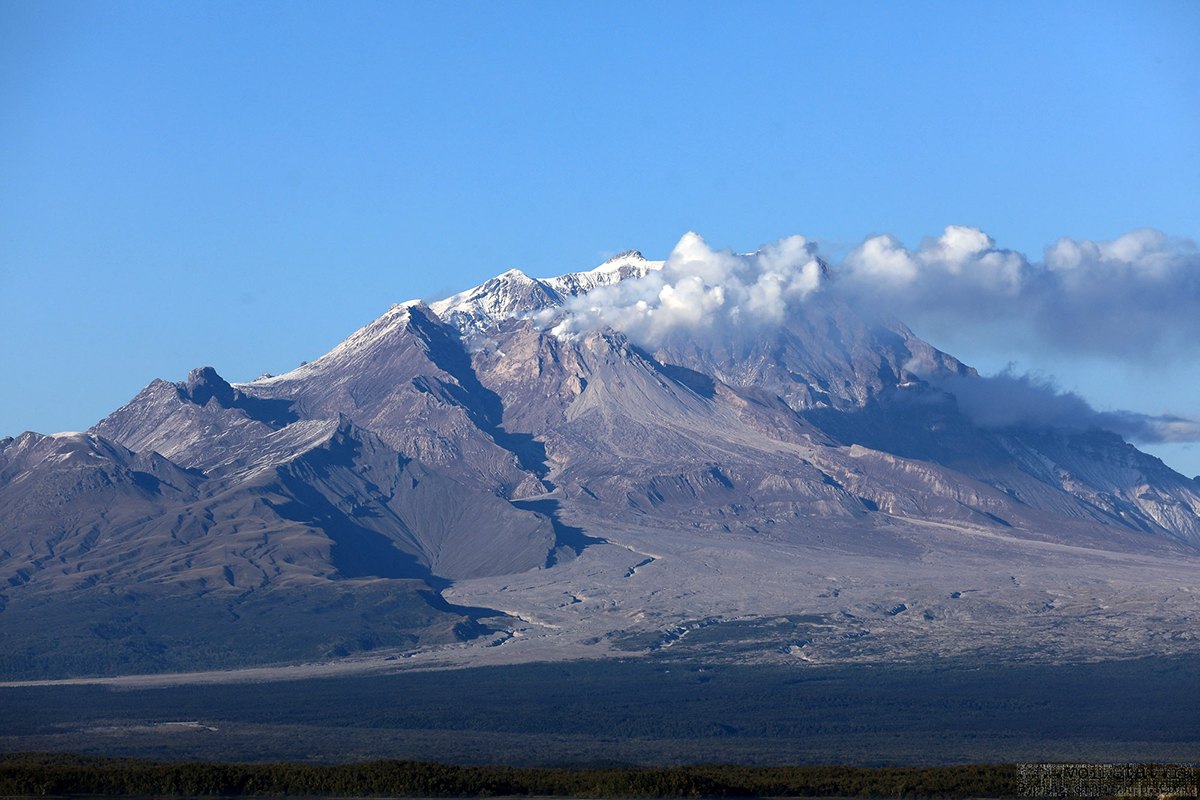 |
Figure 79. Dense steam and gas emissions at Sheveluch drifted SE from multiple spots around the dome on 13 September 2021. Photo by Alexey Demyanchuk, courtesy of the Kamchatka Volcano Station. |
The Tokyo VAAC reported volcanic ash extending W from the volcano on 17 September at 6.1 km altitude. A field team from the KF FRC EGS RAS (Kamchatka Branch of Federal Research Center Unified Geophysical Service of the Russian Academy of Sciences) performed maintenance and repair on the radio telemetered seismic stations in the region on 18 September, and with excellent visibility photographed the larger Sheveluch massif as well as fumarolic activity around the growing dome of “Young Sheveluch” (figures 80 and 81). An eruption on 23 September was reported by the Tokyo VAAC sending ash to 5.2 km altitude and extending SE. KVERT reported the ash cloud visible 22 km E.
The growth of the lava dome continued during October 2021; strong fumarolic activity was accompanied by visible incandescence and incandescent block avalanches descending the flank of the dome. KVERT reported a thermal anomaly over the volcano on all nights that were not obscured by clouds. A strong wind on 6-7 October resuspended ash from the S flank to altitudes of 4-6 km that was observed in satellite images extending 200 km SE. The same thing happened on 21 October with the ash rising to 4 km altitude and drifting 40 km SE. KVERT reported a gas and steam plume containing ash on 24 October extending 33 km NE. Sentinel-2 satellite imagery revealed dark debris flows surrounded by fresh snow on the SE flank of the dome on 24 October (figure 82). The Tokyo VAAC reported resuspended ash at 3.4 km altitude drifting E on 30 October.
Strong fumarolic activity, incandescence, and block avalanches during November 2021 indicated continued growth of the dome. Most clear days revealed a thermal anomaly in satellite imagery according to KVERT. The Tokyo VAAC reported two possible ash emissions on 1 November that rose to 3.7-3.9 km altitude and drifted SE. An eruption on 6 November produced an ash plume that rose to 3.7 km altitude and was visible moving S and W in satellite imagery for about 13 hours before dissipating. On 10 November a team from the Kamchatka Volcano Station was able to make a site visit and observed emissions of gas and steam rising from multiple sites around the edges of the active dome (figure 83). The Tokyo VAAC reported an ash emission on 18 November that rose to 3.4 km altitude and drifted N for about ten hours.
The growth of the lava dome continued throughout December 2021, indicated by strong fumarolic activity, incandescence, block avalanches, and thermal anomalies in satellite data on most days. The Tokyo VAAC reported a possible ash emission on 21 December that rose to 3.7 km altitude and drifted NW. Beginning on 23 December and lasting through the rest of the month, near-daily ash emissions produced ash clouds that rose to 4.5-6 km altitude and drifted up to 100 km NE or NW (figure 84).
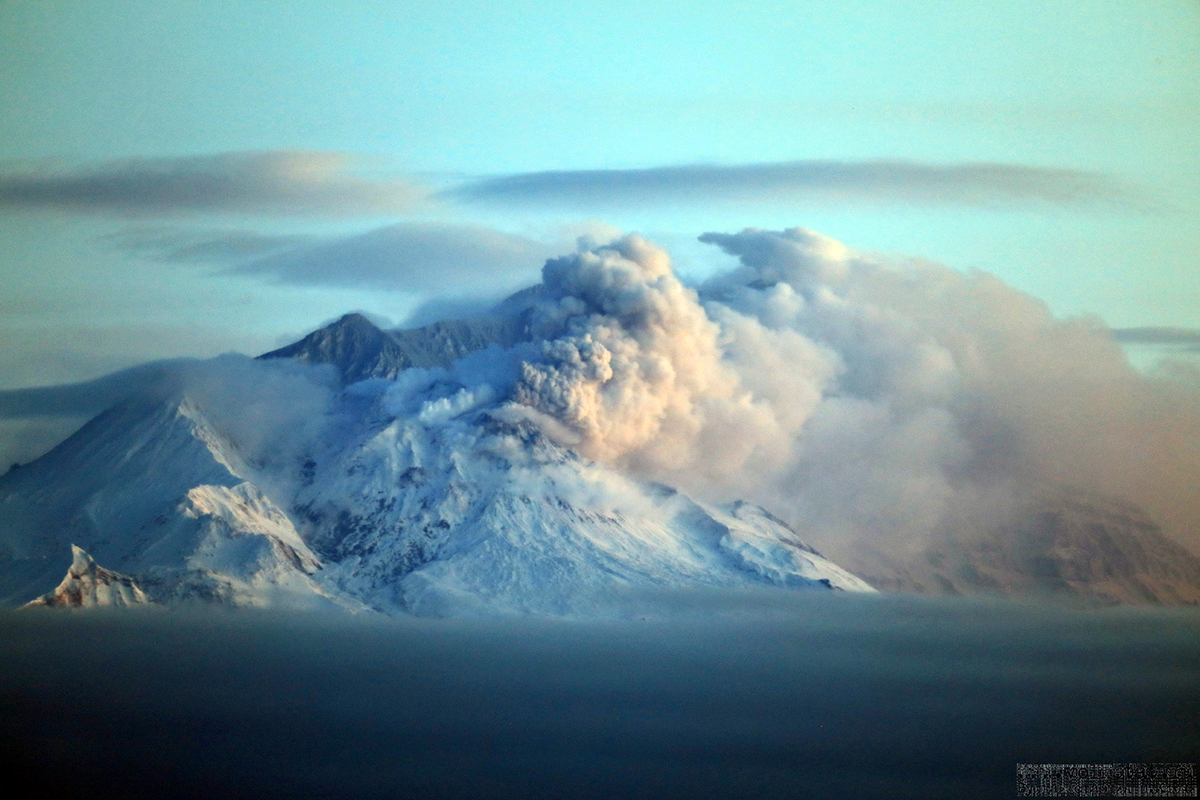 |
Figure 84. A dense ash plume rose from the dome at Sheveluch on 23 December 2021 and drifted NE. Photo by Alexey Demyanchuk, courtesy of the Kamchatka Volcano Station. |
Geological Summary. The high, isolated massif of Sheveluch volcano (also spelled Shiveluch) rises above the lowlands NNE of the Kliuchevskaya volcano group. The 1,300 km3 andesitic volcano is one of Kamchatka's largest and most active volcanic structures, with at least 60 large eruptions during the Holocene. The summit of roughly 65,000-year-old Stary Shiveluch is truncated by a broad 9-km-wide late-Pleistocene caldera breached to the south. Many lava domes occur on its outer flanks. The Molodoy Shiveluch lava dome complex was constructed during the Holocene within the large open caldera; Holocene lava dome extrusion also took place on the flanks of Stary Shiveluch. Widespread tephra layers from these eruptions have provided valuable time markers for dating volcanic events in Kamchatka. Frequent collapses of dome complexes, most recently in 1964, have produced debris avalanches whose deposits cover much of the floor of the breached caldera.
Information Contacts: Kamchatka Volcanic Eruptions Response Team (KVERT), Far Eastern Branch, Russian Academy of Sciences, 9 Piip Blvd., Petropavlovsk-Kamchatsky, 683006, Russia (URL: http://www.kscnet.ru/ivs/kvert/); Kamchatka Volcanological Station, Kamchatka Branch of Geophysical Survey of the Russian Academy of Science, (KB GS RAS), Klyuchi, Kamchatka Krai, Russia (URL: http://volkstat.ru/); MIROVA (Middle InfraRed Observation of Volcanic Activity), a collaborative project between the Universities of Turin and Florence (Italy) supported by the Centre for Volcanic Risk of the Italian Civil Protection Department (URL: http://www.mirovaweb.it/); Hawai'i Institute of Geophysics and Planetology (HIGP) - MODVOLC Thermal Alerts System, School of Ocean and Earth Science and Technology (SOEST), Univ. of Hawai'i, 2525 Correa Road, Honolulu, HI 96822, USA (URL: http://modis.higp.hawaii.edu/); Sentinel Hub Playground (URL: https://www.sentinel-hub.com/explore/sentinel-playground); Tokyo Volcanic Ash Advisory Center (VAAC), 1-3-4 Otemachi, Chiyoda-ku, Tokyo 100-8122, Japan (URL: http://ds.data.jma.go.jp/svd/vaac/data/).


